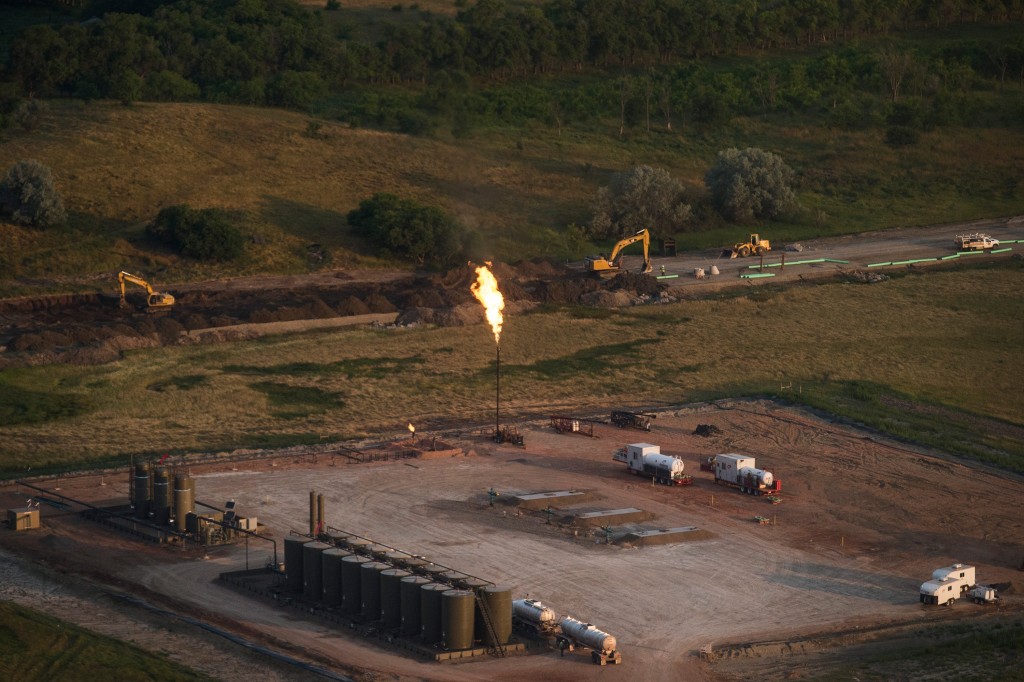There are many, many ways to access Breaking Energy: Read us here at www.breakingenergy.com. Subscribe to our newsletters. Subscribe to our RSS feed at Feedly. Like us on Facebook here. Follow us on Twitter here. Don’t forget, Breaking Energy relies on tips from readers like you. Send us your leads, leaked documents, contributions, or anything… Keep reading →
@newsletter
Sign up and get Breaking Energy news in your inbox.
We will never sell or share your information without your consent. See our privacy policy.The Shale Play Today – August 2014
By VICTORIA SUMMERFIELD | SPILMAN THOMAS & BATTLE, PLLC
Few topics have received as much attention over the past year as the concept of an energy independent United States. In fact, energy independence featured prominently in the run-up to the US presidential election. But what does energy independence really mean?
In the US, energy can be broken down mainly into electrical power – which accounts for 63% of total US primary energy consumption – and liquid transportation fuels – which account for the remaining 37%. As reported earlier this year in Breaking Energy, the US is already effectively energy independent when it comes to power generation, so it is worth instead focusing on the transportation side of the equation, where the issue of importing energy is more relevant. Keep reading →

The 2012 presidential election was truly part of its time not only in the issues it addressed but in the way it was run and analyzed. Large data sets were gathered and poured over and drove not only the campaigns but the streams of analysis that surrounded their outcomes.
Voting data still emerging from the election shows a number of interesting trends, some expected and others surprising. For energy sector observers tracking the public reaction to one of the election’s most pivotal issues, surprises have continued to roll in, reflecting the evolving fortunes and the shifting geographical focus of the energy sector in the US since 2008. Keep reading →

Now that the votes are in and media attention has shifted from a contentious US presidential election to the looming fiscal cliff, energy companies in the oil and gas space as well as wind, solar and other sectors are keeping a sharp eye on what the next four years of energy policy might look like.
The regulatory requirements associated with developing oil and gas on federal lands became a polarizing issue during the election, with republicans claiming the process is too strict, overly burdensome and impedes companies from producing resources vital to the US economy. Keep reading →

The term “big oil” carries quasi-political connotations of a kind of shadow state that has often attracted sharp criticism. But if we look at the end of “big oil,” will we like what we see?
Energy companies are often called on to operate like states rather than private firms. They are held responsible for the safety, health and livelihoods of enormous numbers of people, they are entrusted with resources owned by the public and by virtue of their size and reach they are often as much partners as targets in tackling political problems at home and abroad. Keep reading →

The question of natural resource ownership has been answered in many different ways over the course of human history, with compromises between the interests of societies and individual developers taking on a variety of forms.
While it often seems that the basic parameters of ownership and regulation of ownership have been sorted out in places like the US, comparatively small evolutions in the perception of these relationships can have outsized impacts on specific energy projects or companies. Keep reading →

Domestic energy development and a wide swath of regulatory issues associated with energy production should be addressed more emphatically during the presidential campaign, officials at several industry associations believe.
“Energy hasn’t been absent from the campaign, but I think it deserves a higher profile,” Brendan Williams, vice president, advocacy, at the American Fuel and Petrochemical Manufacturers, told Breaking Energy. Keep reading →

Mining sand, clay and other industrial minerals for use by industrial concerns was a solid business for over 100 years, but the explosion of unconventional drilling that has helped boost US petroleum output to levels not seen in decades opened a new and lucrative market.
US Silica is a 112-year old company that got its start supplying sand to Pennsylvania’s glass industry, but around 2008 the firm began to supply proppants to companies that were hydraulic fracturing wells in order to tap liquid and gas hydrocarbons trapped in low-porosity geologic structures like shale. Keep reading →



Energy Sector Disruption: Three Political Lessons from 2012
By Peter GardettWorking in the energy sector is an inherently political activity. I once sat opposite a friend of a friend at lunch, and when she found out that I covered the energy business and then quizzed me on the industry’s practices, asked if I found people often wanted to hit me. I don’t find that, but the way a modern economy depends on the energy business means that everyone – along the entire spectrum of beliefs – also has opinions about its politics in ways that don’t necessarily reflect a subtle, shifting, complex reality.
Over the course of 2012, we’ve been focusing on the issues at play in energy politics, and have gathered them together in a special hub that can be found on Breaking Energy here. Keep reading →